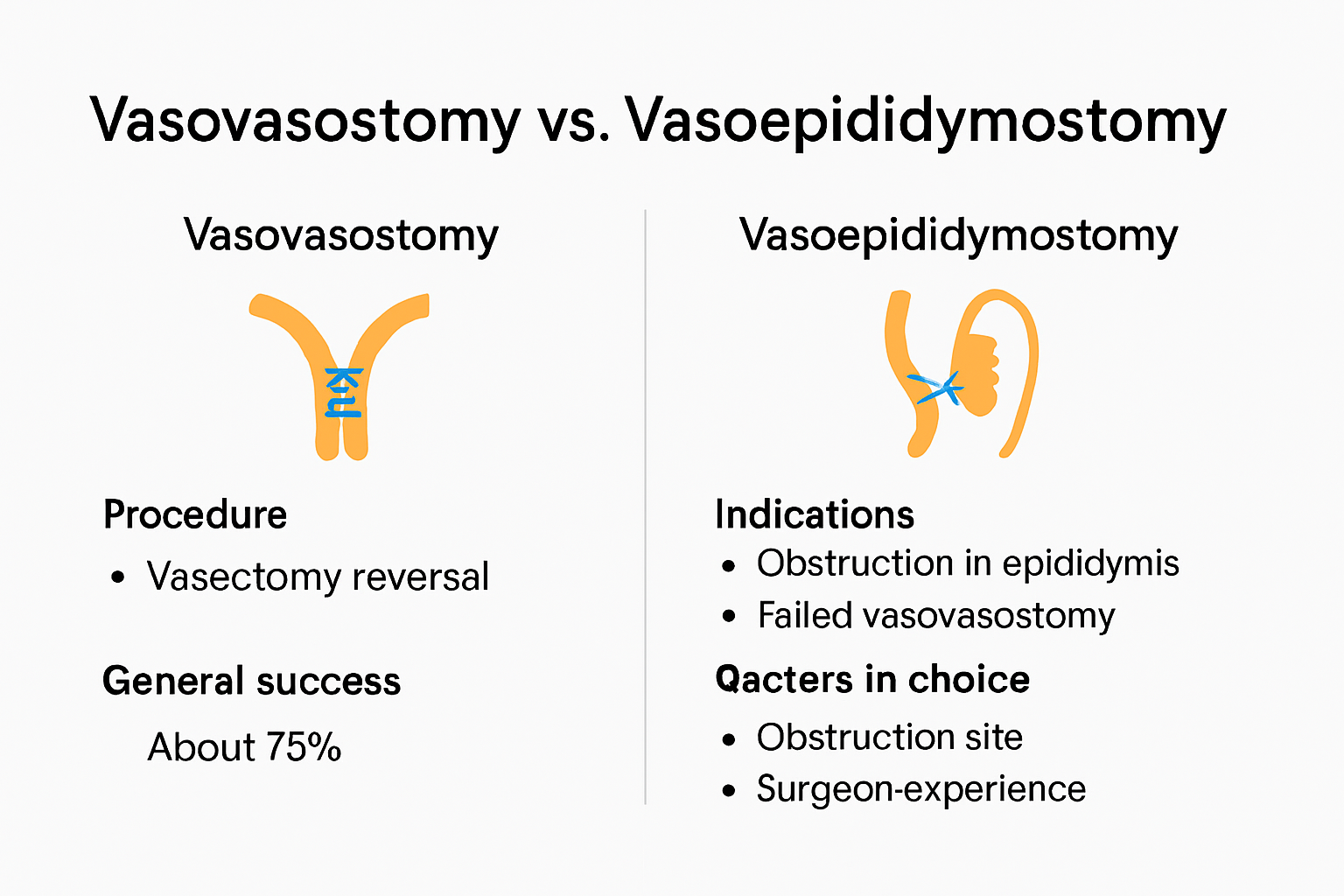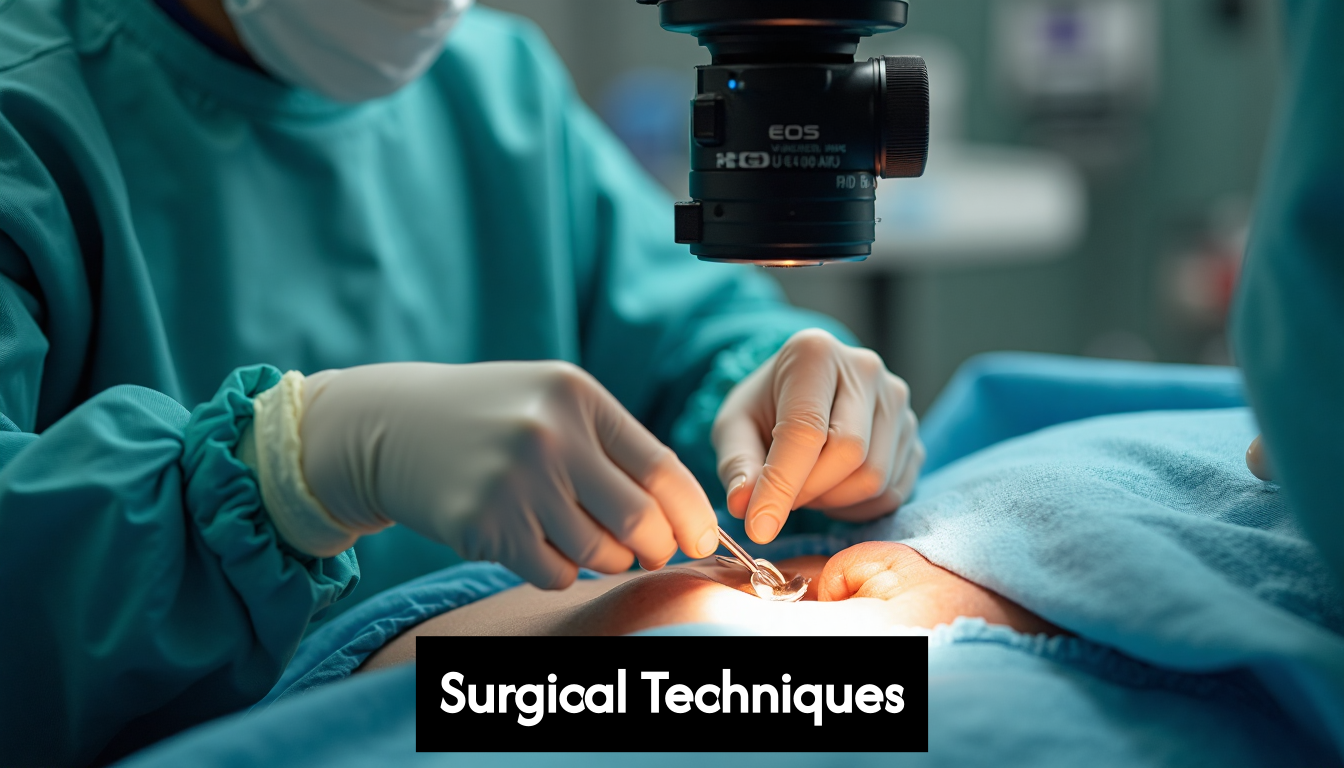Thinking about undoing a vasectomy can feel like flipping a big decision on its head. Most people assume the outcome is a simple yes or no, but that’s just the surface. The reality is far more nuanced. Pregnancy rates after vasectomy reversal vary wildly, swinging from 30 percent to over 90 percent depending on the surgical technique, timing, and even your partner’s fertility. The real surprise is not just the numbers, but the range of choices and influencing factors that can completely change your odds and experience. Get ready for a look at what most people miss before making this life-changing decision.
Table of Contents
- Understanding Your Vasectomy Reversal Options
- Comparing Surgical And Non-Surgical Procedures
- Success Rates And Factors That Matter
- Alternatives If Reversal Is Not For You
Quick Summary
| Takeaway | Explanation |
|---|---|
| Vasectomy Reversal Techniques | The two main surgical methods are vasovasostomy and vasoepididymostomy, with vasovasostomy typically having higher success rates. |
| Success Rates Depend on Factors | Pregnancy rates can vary widely (30% to over 90%) based on surgical technique, time since the vasectomy, surgeon’s experience, and partner’s fertility. |
| Explore Non-Surgical Options | For those who may not be surgical candidates, non-surgical options like percutaneous epididymal sperm aspiration (PESA) with IVF provide viable alternatives. |
| Setting Realistic Expectations | Clear communication with professionals is essential to understand personal potential outcomes and the complexities involved. |
| Alternative Family Building Paths | If reversal isn’t suitable, options such as sperm preservation, donor sperm, and adoption offer flexible paths for building a family. |
Understanding Your Vasectomy Reversal Options
Vasectomy reversal represents a complex medical procedure offering hope for men who want to restore their fertility after a previous vasectomy. Understanding the nuanced options and potential outcomes is crucial for making an informed decision about this significant reproductive choice.

Surgical Techniques for Vasectomy Reversal
Two primary surgical approaches dominate vasectomy reversal procedures: vasovasostomy and vasoepididymostomy. According to research published in the Journal of Andrology, the selection between these techniques depends on specific intraoperative findings and the presence of sperm in vasal fluid.
Vasovasostomy involves directly reconnecting the cut ends of the vas deferens, which is typically the preferred method when sperm are still present in the vasal fluid. This technique has higher success rates and is less complex. Conversely, vasoepididymostomy becomes necessary when blockages prevent sperm flow, requiring surgeons to connect the vas deferens directly to the epididymis, a more intricate procedure with potentially lower pregnancy rates.
Success Rates and Considerations
Success in vasectomy reversal is multifaceted. Mayo Clinic research reveals pregnancy rates ranging dramatically from 30% to over 90%. These outcomes depend on several critical factors:
- Surgical Technique: The complexity and precision of the chosen method
- Time Since Vasectomy: Longer intervals potentially reduce successful reconnection
- Surgeon’s Experience: Expertise significantly impacts procedural outcomes
- Partner’s Fertility: Female reproductive health plays a crucial role
Interestingly, approximately 3%–6% of men who undergo vasectomy will eventually seek reversal. The motivations are diverse, including remarriage, loss of a child, or addressing postvasectomy pain syndrome.
Men considering this procedure should review comprehensive vasectomy reversal information to understand the full spectrum of potential outcomes and personal implications. Consulting with a urological specialist who can assess individual circumstances remains the most reliable approach to determining suitable vasectomy reversal options.
Before proceeding, comprehensive medical evaluation, discussing expectations with your partner, and understanding potential financial investments are essential steps in navigating this significant reproductive decision.
Comparing Surgical and Non-Surgical Procedures
When exploring fertility restoration after a vasectomy, men have multiple pathways to achieving pregnancy. Understanding the distinctions between surgical and non-surgical procedures helps individuals make informed decisions aligned with their reproductive goals and medical circumstances.
Surgical Vasectomy Reversal Techniques
Microsurgical vasectomy reversal represents the gold standard for most patients seeking to restore fertility. This precise surgical approach involves reconnecting the vas deferens with extraordinary precision, typically achieving sperm return rates exceeding 90% when the patient’s condition is appropriate.
Two primary surgical methods dominate the landscape: vasovasostomy and vasoepididymostomy. A systematic review and meta-analysis confirms vasovasostomy as the most cost-effective method, offering high patency and pregnancy rates. Surgeons determine the specific technique during the procedure based on intraoperative findings, ensuring the most suitable approach for individual anatomical conditions.

Non-Surgical Fertility Alternatives
For individuals who may not be ideal surgical candidates or prefer alternative approaches, non-surgical options provide compelling alternatives. Percutaneous epididymal sperm aspiration (PESA) combined with in vitro fertilization (IVF) offers an effective pathway to achieving pregnancy.
Non-surgical methods present several advantages:
- Minimally Invasive: Less physical trauma compared to surgical procedures
- Faster Recovery: Shorter downtime and reduced medical intervention
- Alternative Fertility Path: Suitable for patients with complex surgical challenges
- Technological Precision: Leveraging advanced reproductive technologies
Patients should explore comprehensive fertility restoration strategies to understand the full spectrum of options available. Consulting with reproductive specialists helps determine the most appropriate approach based on individual medical history, current health status, and personal fertility objectives.
Each method carries unique considerations regarding success rates, costs, and potential complications. Thoroughly discussing these factors with a urologist or fertility specialist ensures a comprehensive understanding of the potential outcomes and helps align expectations with realistic reproductive goals.
Ultimately, the choice between surgical and non-surgical procedures depends on multiple factors including age, overall health, partner’s fertility, time since vasectomy, and personal preferences. A personalized medical consultation remains the most reliable approach to navigating these complex reproductive decisions.
Success Rates and Factors That Matter
Vasectomy reversal success is a nuanced journey influenced by multiple complex factors. Understanding these variables helps set realistic expectations and guides informed decision-making about fertility restoration.
Pregnancy Rate Dynamics
Research from the Mayo Clinic reveals fascinating insights into vasectomy reversal outcomes. Pregnancy rates demonstrate significant variability, ranging from 30% to over 90%, contingent upon several critical parameters.
Time emerges as a crucial determinant. Advanced Urology research indicates that most reversals performed within 10 years of the initial procedure demonstrate high success rates. However, success potential declines substantially after 15 years, underscoring the importance of timing in reproductive restoration.
Key Influencing Factors
Multiple interconnected factors substantially impact vasectomy reversal success:
- Surgical Technique: Precision and surgeon’s microsurgical expertise
- Time Since Vasectomy: Shorter intervals correlate with higher success probabilities
- Partner’s Reproductive Health: Female fertility plays a significant role
- Age of Both Partners: Reproductive potential diminishes with increased age
- Underlying Fertility Conditions: Pre-existing reproductive challenges
Men considering reversal should understand comprehensive fertility testing strategies to comprehensively assess their reproductive potential. Comprehensive evaluation provides critical insights into potential success probabilities.
Realistic Expectations and Professional Guidance
Setting realistic expectations requires transparent communication with reproductive specialists. While statistical probabilities offer guidance, individual outcomes vary significantly. Professional medical consultation remains the most reliable approach to understanding personal vasectomy reversal potential.
Factors like sperm quality, previous fertility history, and potential surgical complications introduce additional complexity. Some men might discover alternative fertility strategies more suitable for their specific circumstances.
Ultimately, vasectomy reversal represents a deeply personal decision intertwining medical science, individual health circumstances, and reproductive aspirations. Comprehensive medical assessment, open discussions with partners, and thorough understanding of potential outcomes form the foundation of an informed reproductive journey.
Alternatives If Reversal Is Not For You
When vasectomy reversal seems impractical or unsuccessful, multiple alternative pathways exist for men wanting to expand their family. Understanding these options provides hope and flexibility in navigating reproductive challenges.
Advanced Reproductive Technologies
Johns Hopkins Medicine highlights sperm retrieval techniques as a powerful alternative to traditional vasectomy reversal. Specifically, combining sperm retrieval with in vitro fertilization (IVF) or intracytoplasmic sperm injection (ICSI) offers a sophisticated approach to biological parenthood.
These advanced techniques involve directly extracting sperm through surgical or minimally invasive procedures. Potential methods include:
- Testicular Sperm Extraction (TESE): Surgically removing sperm directly from testicular tissue
- Percutaneous Epididymal Sperm Aspiration (PESA): Using a needle to extract sperm from the epididymis
- Microsurgical Epididymal Sperm Aspiration (MESA): A more precise microscopic extraction technique
Sperm Preservation and Alternative Family Building
Mayo Clinic research emphasizes the potential of sperm cryopreservation. This method allows men to freeze sperm at the time of retrieval, creating a biological backup for future reproductive attempts. Storage costs are typically additional to the retrieval procedure, but offer significant long-term flexibility.
For couples seeking comprehensive family-building options, several alternatives emerge:
- Donor Sperm: Utilizing carefully screened donor genetic material
- Adoption: A loving path to parenthood independent of biological constraints
- Assisted Reproductive Technologies: Combining retrieved sperm with advanced fertilization techniques
Emotional and Practical Considerations
Choosing an alternative to vasectomy reversal involves deeply personal decisions. Read our comprehensive guide on fertility options to understand the emotional and practical implications of different reproductive strategies.
Each alternative carries unique emotional, financial, and medical considerations. Open communication with partners, reproductive specialists, and potentially mental health professionals can help navigate these complex choices. The goal remains consistent: finding the most suitable path to parenthood that aligns with individual circumstances and desires.
Ultimately, modern reproductive medicine offers unprecedented flexibility. Whether through advanced technological interventions, alternative conception methods, or family-building approaches beyond biological reproduction, men have more options than ever before. The most important factor is approaching these decisions with comprehensive information, emotional support, and a clear understanding of personal goals.
Frequently Asked Questions
What are the main surgical techniques for a vasectomy reversal?
The two primary surgical techniques for a vasectomy reversal are vasovasostomy, which reconnects the cut ends of the vas deferens, and vasoepididymostomy, which is used when there’s a blockage preventing sperm flow and connects the vas deferens directly to the epididymis.
What are the success rates for vasectomy reversals?
Success rates for vasectomy reversals can vary significantly, ranging from 30% to over 90%. These rates depend on factors like the surgical technique used, the time since the vasectomy, the surgeon’s expertise, and the female partner’s fertility.
Are there non-surgical options for restoring fertility after a vasectomy?
Yes, non-surgical options such as Percutaneous Epididymal Sperm Aspiration (PESA) combined with in vitro fertilization (IVF) provide effective alternatives for men who may not be candidates for surgery or prefer non-surgical methods.
What should I consider before deciding on a vasectomy reversal?
Before deciding on a vasectomy reversal, it’s important to consider factors such as the time since your vasectomy, your overall health and that of your partner, potential surgical risks, and realistic success probabilities. Consulting with a medical specialist can provide valuable insights and guidance.
Take Control of Your Post-Vasectomy Journey—Start at Home
You have read about the unpredictable outcomes after a vasectomy reversal. Questions like “Is the reversal actually working?” or “Can we trust traditional follow-ups?” are common worries. Waiting and second-guessing can be stressful, especially when success rates hinge on both technology and timing. For anyone thinking about restoring fertility or checking vasectomy effectiveness, knowing your sperm count and quality is the next crucial step. Why rely solely on guesswork after something as important as a reversal?





